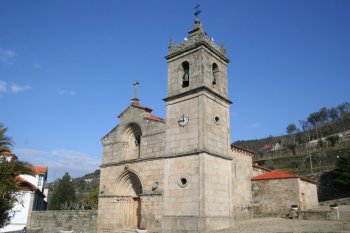Explore the best places
Results for Santa Maria do Bouro in Portugal
Igreja de Santa Maria Madalena
- heritage
Rua Rogério Figueiroa Rego
2565-814, Turcifal
This temple has one only nave to which it opens four lateral chapels. The main chapel, with the walls covered by glazed tiles panels from the sixteen hundreds, possesses a carved altarpiece from the 17th century. It is also worthy to mention the baptism chapel.
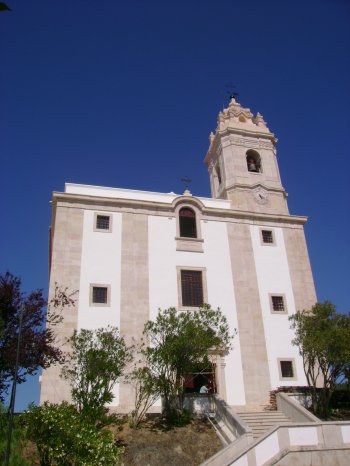
Igreja de Santa Maria Madalena
- heritage
Via da Falperra - EN309
4715-390, Nogueira
Church in monte da Falperra, is a beautiful example of Rococo architecture. It is designed by the architect André Soares da Silva Braga, at the instigation of Archbishop d. Rodrigo de Moura Telles. The interior is coated with 18th century tiles ceramist Policarpo de Oliveira Fernandes.
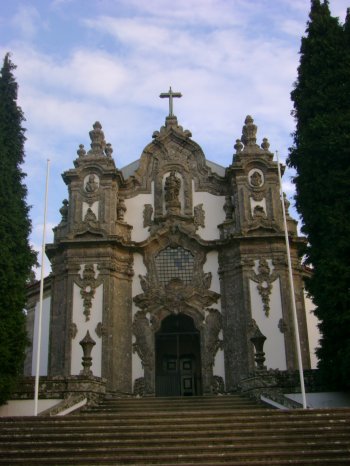
Igreja de Santa Maria da Alcáçova
- heritage
Largo de Alcáçova
2000, Santarém
Founded in 1154 by the Knights from the Order of the Templar, this church lost all of its mediaeval traces. It is a simple construction topped by a bell ringer tower in which the façade is precede by a simple porch in stone.

Igreja de Santa Maria da Serra
- heritage
Rua do Adro
2350-222, Torres Novas
Baroque church dating from the 18TH century, consisting of a single cloth façade with a Bell Tower located near and, inside, a ship with wooden ceiling and a vaulted chancel. The images in the side altars in the main altar and the sacristy.
Igreja de Santa Maria de Airães
- heritage
Lugar do Mosteiro
4650-078, Airães
Although founded in the 11th century, the Romanesque building of this church only took place in the 13th and 14th centuries, when Gothic-inspired elements were also introduced, later suffering an extension to three naves and renovations in the 17th and 19th centuries. The portico with four archivolts retains its original features. The interior, whose appearance is the result of the reconstructions it underwent, is partially lined with 17th-century tiles. It is worth admiring the Romanesque portico, the three naves supported by powerful columns and the gilded statues.

Igreja de Santa Maria de Alcáçova
- heritage
Montemor-o-Velho
3140, Montemor-o-Velho
Building built in the 11th century was restored between 1490 and 1510. It features a Manueline style with a naturalistic character, already influenced by the Renaissance. Inside, with three naves, the three altarpieces stand out, the main one from the 17th century and the secondary ones from the 16th century. Outside, the highlight is the door on the side wall, which has some Moorish influence.
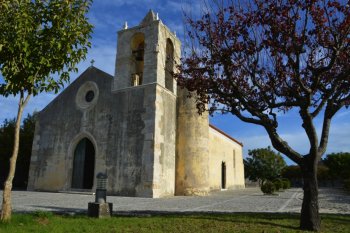
Igreja de Santa Maria de Almacave
- heritage
Rua das Cortes
5100-132, Lamego
This church is composed by a nave with a high choir, narrower and lower main chapel, campanile, lateral chapels and several divisions. This is a temple with a Romanic structure from which it still preservs the main door with four archivolts and a lateral doorway with ribbed lintels with simple modillions. The main façade has a pediment with a Romanic doorway and two lateral porticos with Romanic elements with a poured cross on the tympanum. The lateral elevations have corbels on the nave volume and on the main chapel attachments, with pilaster on the corners and the top with bandelet …
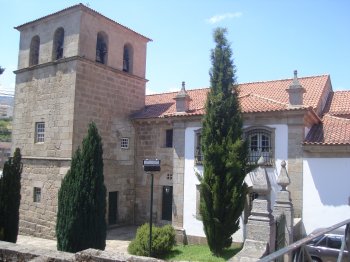
Igreja de Santa Maria de Alvarelhos
- heritage
Rua Santa Maria, 2
4745-054, Trofa
This church has a bell tower crowning its simple facade, flanked by two turrets. The two side doors are in Romanesque style. Inside, the highlights are the walls covered in 17th century tiles.
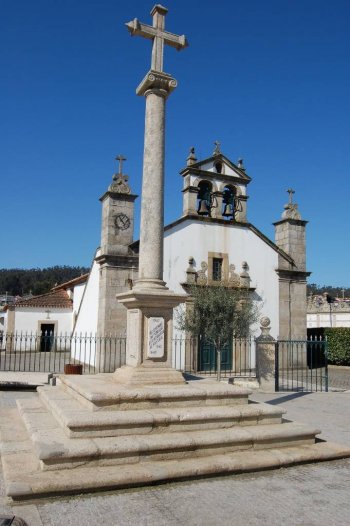
Igreja de Santa Maria de Azurara
- heritage
Rua Nossa Srenhora da Conceição, 72
4480-171, Azurara
This temple from the 15th century recently underwent some improvement work. It has a façade sided by a campanile from the 17th century and a Manueline portico. On the inside there are three naves and a main chapel with hand painted vaults. It is worthy to mention the glazed tiles coverage, the carved main altarpiece and the paintings from the 18th century.
Igreja de Santa Maria de Barrô
- heritage
Calçada da Igreja
4660-034, Barrô
Located on a steep slope overlooking the Douro River, the Church of Barrô is a well-preserved example of medieval architecture, despite the changes of the Modern Period. The main façade and the chancel are worth highlighting. The facade of the Church presents a program with some monumentality, reflected in the careful portal and the arrangement of the false large window.
